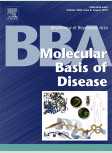Stroke:变异EPO可以作为缺血性脑卒中药物干预的新选择
2012-12-20 Stroke 互联网 geniusgodyu
促红细胞生成素 (EPO) 对缺血性损伤有神经保护作用。但是,EPO治疗卒中时需要大剂量并多次给药,这样会因它的促红细胞生成作用产生严重的副作用。匹兹堡大学的Guodong Cao博士等人研究发现:变异的EPO能够保留神经保留作用,但没有促红细胞生成活性及激活血小板的活性。可以作为卒中临床干预的选择。 研究人员制备了一系列的变异EPO, 每种都只改变EPO模序中的一个氨基酸,测定它们的促红细胞生
促红细胞生成素 (EPO) 对缺血性损伤有神经保护作用。但是,EPO治疗卒中时需要大剂量并多次给药,这样会因它的促红细胞生成作用产生严重的副作用。匹兹堡大学的Guodong Cao博士等人研究发现:变异的EPO能够保留神经保留作用,但没有促红细胞生成活性及激活血小板的活性。可以作为卒中临床干预的选择。
研究人员制备了一系列的变异EPO, 每种都只改变EPO模序中的一个氨基酸,测定它们的促红细胞生成活性。使用皮质神经元培养细胞,将其暴露在N-甲基-d-天冬氨酸神经毒素下,并使用形成大脑中动脉短暂性缺血的马模型进行试验。在测定细胞内信号途径的同时也评估神经保护和神经功能方面的预后。
研究人员发现:将104号位点上的异亮氨酸替换为丝氨酸 (S104I-EPO)后产生的变异EPO 完全失去了EPO的促红细胞生成的活性及血小板激活活性。输注S104I-EPO能够明显阻断N-甲基-d-天冬氨酸对培养细胞的诱导死亡作用,但是仍有类似原始EPO对脑梗死和神经缺损的神经保护作用。S104I-EPO和原始型EPO都是激活相似的逃生信号途径,如磷脂酰肌醇3激酶/AKT、丝裂原激活蛋白激酶/细胞外信号调节激酶1/2及STAT5。 磷脂酰肌醇3激酶/AKT、丝裂原激活蛋白激酶/细胞外信号调节激酶1/2被抑制后将降低S104I-EPO的神经保护作用,提示这些途径是变异EPO对抗脑缺血的基础。
研究人员得出结论:S104I-EPO与原始型EPO相比,保留了对缺血性脑损伤的神经保护作用,但是没有促进红细胞增加和血小板激活的副作用。这项神奇的发现提示无促红细胞活动的变异EPO可以成为缺血性卒中干预的重要备选项之一。
与缺血性脑卒相关的拓展阅读:
- Stroke:变异EPO可以作为缺血性脑卒中药物干预的新选择
- 中国缺血性脑卒中和短暂性脑缺血发作二级预防指南2010
- Stroke:治疗急性局灶性缺血性脑卒中的新方法
- 2010年中国急性缺血性脑卒中诊治指南
- 急性缺血性脑卒中的治疗进展 更多信息请点击:有关缺血性脑卒更多资讯

doi: 10.1161/STROKEAHA.112.663120
PMC:
PMID:
Mutant Erythropoietin Without Erythropoietic Activity Is Neuroprotective Against Ischemic Brain Injury
Yu Gan, PhD, Juan Xing, MD, Zheng Jing, PhD, R. Anne Stetler, PhD, Feng Zhang, MD, PhD, Yumin Luo, MD, PhD, Xunming Ji, MD, Yanqin Gao, MD and Guodong Cao, PhD
Background and Purpose—Erythropoietin (EPO) confers potent neuroprotection against ischemic injury. However, treatment for stroke requires high doses and multiple administrations of EPO, which may cause deleterious side effects due to its erythropoietic activity. This study identifies a novel nonerythropoietic mutant EPO and investigates its potential neuroprotective effects and underlying mechanism in an animal model of cerebral ischemia. Methods—We constructed a series of mutant EPOs, each containing a single amino acid mutation within the erythropoietic motif, and tested their erythropoietic activity. Using cortical neuronal cultures exposed to N-methyl-d-aspartate neurotoxicity and a murine model of transient middle cerebral artery occlusion, neuroprotection and neurofunctional outcomes were assessed as well as activation of intracellular signaling pathways. Results—The serine to isoleucine mutation at position 104 (S104I-EPO) completely abolished the erythropoietic and platelet-stimulating activity of EPO. Administration of S104I-EPO significantly inhibited N-methyl-d-aspartate-induced neuronal death in primary cultures and protected against cerebral infarction and neurological deficits with an efficacy similar to that of wild-type EPO. Both S104I-EPO and wild-type EPO activated similar prosurvival signaling pathways such as phosphatidylinositol 3-kinase/AKT, mitogen-activated protein kinase/extracellular signal-regulated kinase 1/2, and STAT5. Inhibition of phosphatidylinositol 3-kinase/AKT or mitogen-activated protein kinase/extracellular signal-regulated kinase 1/2 signaling pathways significantly attenuated the neuroprotective effects of S104I-EPO, indicating that activation of these pathways underlies the neuroprotective mechanism of mutant EPO against cerebral ischemia. Conclusions—S104I-EPO confers neuroprotective effects comparable to those of wild-type EPO against ischemic brain injury with the added benefit of lacking erythropoietic and platelet-stimulating side effects. Our novel findings suggest that the nonerythropoietic mutant EPO is a legitimate candidate for ischemic stroke intervention.
本网站所有内容来源注明为“梅斯医学”或“MedSci原创”的文字、图片和音视频资料,版权均属于梅斯医学所有。非经授权,任何媒体、网站或个人不得转载,授权转载时须注明来源为“梅斯医学”。其它来源的文章系转载文章,或“梅斯号”自媒体发布的文章,仅系出于传递更多信息之目的,本站仅负责审核内容合规,其内容不代表本站立场,本站不负责内容的准确性和版权。如果存在侵权、或不希望被转载的媒体或个人可与我们联系,我们将立即进行删除处理。
在此留言














#缺血性脑#
65
#缺血性#
53
#药物干预#
56
#变异#
52